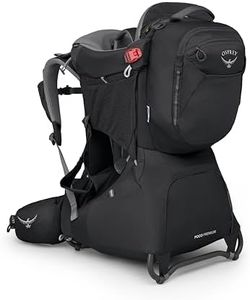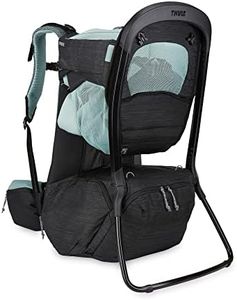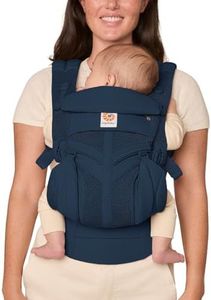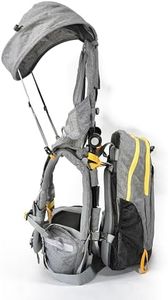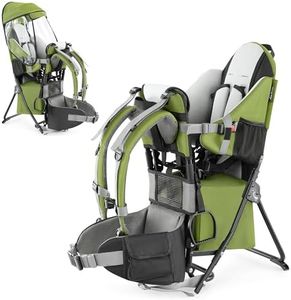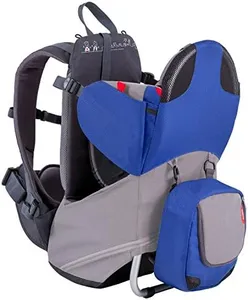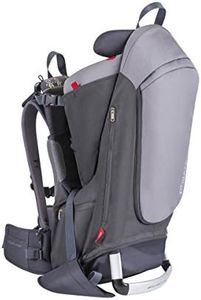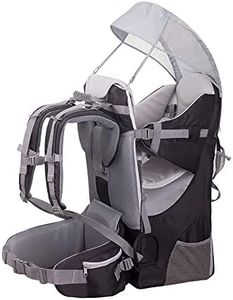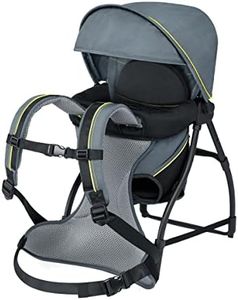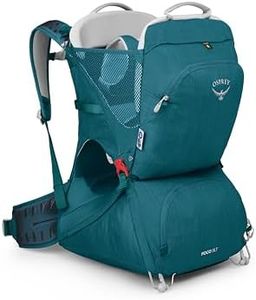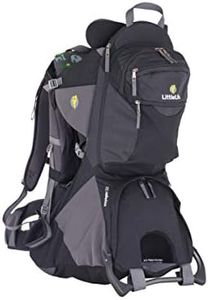We Use CookiesWe use cookies to enhance the security, performance,
functionality and for analytical and promotional activities. By continuing to browse this site you
are agreeing to our privacy policy
10 Best Backpack Child Carriers
From leading brands and best sellers available on the web.Buying Guide for the Best Backpack Child Carriers
Choosing a child carrier backpack can make outdoor adventures and day-to-day errands more comfortable and enjoyable for both you and your child. It’s important to focus on safety, comfort, and usability. Think about the types of activities you’ll be doing, how long you’ll be wearing the backpack, and the age and size of your child. Look for features that fit your lifestyle—whether you’re planning longer hikes or just want something easy for a stroll in the park. The right carrier is one that you can use with confidence, keeps your child secure and comfortable, and feels good on your shoulders and back.Weight CapacityWeight capacity refers to the maximum combined weight of the child and any other gear the carrier can safely support. This is important because using a carrier beyond its weight limit can compromise safety and comfort for both you and your child. Typical carriers support children from about 15 to 40 pounds; some handle slightly more. If your child is younger or smaller, a lower minimum capacity works fine, while growing toddlers need carriers with higher upper limits. Choose a carrier that matches your child’s current weight and consider how much use you want to get out of it as your child gets older.
AdjustabilityAdjustability means how well the carrier can be customized to fit different body types—both grown-ups and children. It matters because a good fit ensures less strain on your back and keeps your child snug. Look for adjustable shoulder straps, hip belts, and seat heights. Some carriers allow fine-tuning for torso length or shifting the seat as your child grows. This is especially important if more than one adult will use the carrier or if you want to use the same carrier as your child grows. Test for easy adjustments and make sure you can achieve a comfortable, secure fit.
Safety FeaturesSafety features include secure harnesses, buckles, sturdy frames, and stable stands that keep the backpack upright when loading or unloading. These features prevent accidental falls and help keep your child safe during use. Harnesses usually have multiple points of restraint to keep your child from slipping out. Choose a carrier that feels solid and make sure all fasteners are easy for you to operate but hard for your child to undo. A stable kickstand helps you safely set the carrier down with your child inside.
Comfort (Padding and Ventilation)Comfort features focus on padding for the adult’s shoulders, hips, and back, as well as the child’s seat and leg openings. Ventilation refers to mesh panels that let air flow, preventing you and your child from overheating. Padding is crucial for long walks or hikes since it reduces strain, while ventilation becomes noticeable on warmer days or during intense activities. If you plan to be out for long periods or in hot weather, choose a carrier with generous padding and plenty of breathable mesh for airflow.
Storage OptionsStorage refers to built-in pockets and compartments for carrying essentials like diapers, snacks, and water bottles. Having enough storage is useful so you don’t need an extra bag. Storage spaces range from small pockets for keys to large compartments for picnic supplies. For short outings, minimal storage is fine, while day-long adventures benefit from larger integrated backpacks. Consider how much you need to carry and if you want easy access to items while on the go.
Sun and Rain ProtectionSun and rain protection are provided by attachable hoods, canopies, or covers. These protect your child from harsh sunlight or sudden showers. Sunshades are important in sunny climates or if you plan long outdoor treks, while rain covers offer extra peace of mind in unpredictable weather. If you’ll mostly be outside, look for carriers that include or allow adding both sun and rain protection, and check how easy they are to use or pack away.
Weight and Bulk of the CarrierThe weight and overall size of the carrier when empty affects how easy it is to carry, transport, and store. Lighter carriers are easier to handle but may offer fewer features; heavier models can be sturdier and have more padding or storage. If you need to travel or pack your carrier frequently, or if you don’t want much added weight, opt for a more compact and lightweight design. If comfort and extra features are more important and you won’t mind the extra bulk, a larger model may be best.

